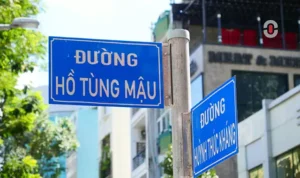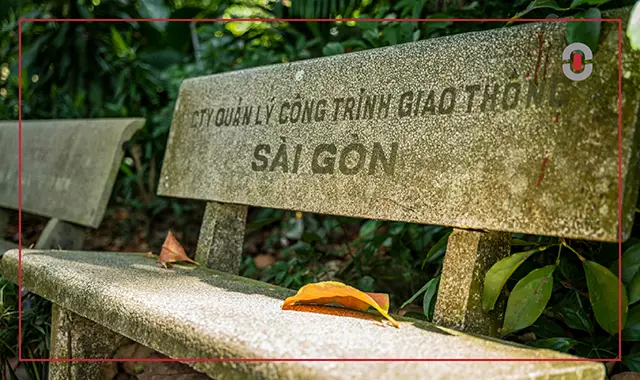Vietnam is a rising star in Southeast Asia’s digital economy. With over 97 million people and a young, tech-savvy population, it’s an increasingly attractive market for global brands. But getting into Vietnam’s potential means you need more than just translating content—it means you need a deep cultural and linguistic feel.
One of the most overlooked parts of getting localization right in Vietnam is understanding how their writing system works. From its historic roots to how it’s used every day, the Vietnamese script plays a big role in making content feel genuinely local. In this article, we’ll explore how the Vietnamese writing system shapes communication—and why that matters if you want your localization to truly land.
The Story Behind Vietnamese Scripts
A Look Back: Chữ Nôm and Classical Chinese
Before Vietnam adopted its current writing system, the country used Classical Chinese (Chữ Hán) and its local variant, Chữ Nôm. These systems were complex, character-based, and mostly limited to educated elites. Literacy rates were low, and everyday communication wasn’t always possible in written form.
Chữ Nôm was Vietnam’s unique way of writing its own language using Chinese characters. It was clever and deeply tied to local identity—but very hard to learn and far from standardized.
The Rise of Quốc Ngữ: A Game-Changer
The Vietnamese script used today—Quốc Ngữ—came from Jesuit missionaries in the 17th century, who used Latin letters combined with diacritics to represent the language more phonetically. At first, it didn’t catch on widely, but over time—especially during the French colonial period—it became the official writing system.
Now, Quốc Ngữ is used in everything from text messages to government publications. It’s the modern backbone of Vietnamese written communication.
What Makes Quốc Ngữ Unique
Latin, But With a Twist
At first glance, Quốc Ngữ looks simple—just Latin letters, right? Not exactly. It includes 29 letters (a few that aren’t in English) and relies heavily on diacritics (marks above or below letters) to show tones and pronunciation. For example:
- ma (ghost)
- má (mother)
- mả (grave)
- mà (but)
- mạ (rice seedling)
- mã (horse)
One small mark changes the entire meaning of a word. For localization, that means tone marks matter—a lot.
Why Tones Affect Translation
Vietnamese has six tones, and each one changes the meaning of a word, even if the base spelling is the same. This means automated systems that miss or misplace a diacritic can end up completely changing the meaning. Not great if you’re trying to build trust with local users.
Brands must be extremely careful about tone accuracy—especially in headlines, calls to action, and anything customer-facing.
Why Writing Systems Matter in Localization
It’s Not Just Translation—It’s Tone and Trust
When you localize, your goal isn’t just to say the same thing—it’s to say it in a way that feels natural. In Vietnam, using proper spelling and tones isn’t just about looking smart. It shows respect.
When you skip tone marks or use the wrong word form, readers immediately sense something’s off. It might seem like a small mistake—but it signals that the content wasn’t made for them. And that can hurt engagement and credibility.
Design Pitfalls: Fonts and Layout
Vietnamese tone marks can stack above or below letters, depending on the word. If your font or web layout isn’t set up to handle this, things can break. Common issues include:
- Diacritics disappearing;
- Marks overlapping;
- Mobile responsiveness issues;
- Broken word rendering in buttons or menus.
Always test Vietnamese content in its final format—don’t rely on preview windows or English font settings.
Examples from the Field
Success Story: Fintech App UI
One fintech company used native Vietnamese linguists to write and review every part of their app interface. They even had a specific check just for tone marks. As a result, users felt the content “just worked”—leading to better trust and more signups.
Fail Example: Billboard Blunder
A global brand launched a product in Vietnam with a slogan that was missing a tone mark. Unfortunately, this changed the meaning of a word—and not in a good way. People started sharing photos of it online, joking about the error. The company had to pull the campaign and issue a fix.
Best Practices for Vietnamese Localization
Use Native Experts
Even advanced AI tools mess up tones or pick the wrong homophones. Native linguists spot what machines miss—and can phrase things naturally.
Add a Tone QA Step
Make diacritic accuracy part of your QA. A spellcheck isn’t enough—especially for shorter phrases like menus, buttons, or titles where one wrong mark can derail meaning.
Choose the Right Fonts
Use fonts designed for Vietnamese. Always test for how diacritics render in real usage—especially in mobile apps and web headers.
Teach Teams Tone Sensitivity
Your global team may not realize how much tone marks matter. Run a quick training or write up a guide showing common mistakes, what they mean, and how to avoid them.
Customize by Region
Some words vary between northern and southern Vietnam. Even though Quốc Ngữ is standardized, preferred phrasing may shift depending on your audience. Tailor your glossary to the target region when possible.
SEO & Search Behavior Tips
Vietnamese users often skip tone marks when typing in search engines. But content written with correct tone marks still ranks better and looks more professional.

- Use proper diacritics in titles, metadata, and body copy.
- Avoid tone marks in URLs and slugs.
- Include unaccented keywords in metadata (if appropriate).
Here’s an example:
Title: “Cách chọn laptop cho sinh viên”
Slug: /cach-chon-laptop-sinh-vien
Balance correctness with what users actually type.
Going Deeper: Language Nuance in Brand Messaging
Watch Out for Homophones
Vietnamese is full of words that sound the same but mean different things depending on the tone. Even small errors can totally flip your message. Always check short headlines, captions, or button labels carefully.
Skip the Word-for-Word Trap
Some English slogans don’t translate well. Get creative. Instead of trying to translate “Unleash your potential” directly, something like “Khơi dậy tiềm năng của bạn” works better—it sounds more natural to local readers.
Formality and Pronouns Matter
In Vietnamese, you don’t just say “you.” You choose from dozens of options depending on age, relationship, and tone. Choose wrong, and you might sound rude—or overly familiar. Make sure content matches audience expectations.
Conclusion: Small Details, Big Impact
Getting Vietnamese localization right isn’t just about translating—it’s about connecting. And that starts with understanding the writing system.
When brands take the time to write like locals do—with the right tones, structure, and respect—they earn more than just conversions. They earn trust.
Want your message to land in Vietnam? Then speak their language—literally—the right way.
What About Informal Channels and Slang?
Vietnamese, like any language, has a formal and informal side. While official communication sticks to proper spelling and tone, things like social media, chatbots, or app notifications can use more relaxed language.
But here’s the catch: even casual tone needs to be intentional.
A chatbot that talks to young users might use friendly language and emojis—but it still needs to:
- Respect pronoun expectations.
- Avoid slang that’s too regional or dated.
- Be aware of tone mark use especially in short words that are easy to confuse.
Here’s an example:
Using “OK luôn” might sound relatable, but in some contexts, it can come off as too informal or unprofessional. Testing with local focus groups or native reviewers helps strike the right balance.
When You Get It Right, Users Feel It Instantly
The beauty of nailing Vietnamese localization is that readers notice the difference immediately—even if they can’t explain why. They’ll say:
- “This sounds like it was written by someone here.”
- “It feels like this brand gets us.”
- “I didn’t expect this app to be so smooth in Vietnamese!”
That’s the result of attention to detail—of knowing the writing system and respecting its complexity.
Final Tip: Don’t Rely on Just One Person
Even the best native linguists can overlook something. That’s why collaboration always wins. Set up processes like:
- Dual review for key content.
- Peer feedback rounds for product naming.
- QA reviews by region when targeting Northern vs. Southern Vietnam.
Localization isn’t a solo task—it’s a team sport.
